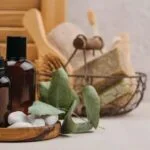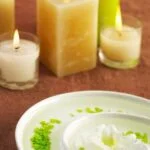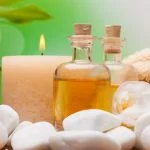Aromatherapy has been used for centuries as a natural remedy for various ailments, and one of the most popular forms is herbal scents aromatherapy. This practice involves using essential oils derived from plants to promote physical and mental well-being. In this article, we will delve into the history, science, and practical applications of herbal scents aromatherapy, as well as its impact on psychological and physical wellness.
The use of aromatic plants for medicinal purposes dates back to ancient civilizations, but the term “aromatherapy” was coined in the 20th century. The origins and evolution of herbal scents in aromatherapy have played a significant role in shaping its current practices and popularity. Understanding the historical context can provide valuable insights into how these herbal scents have been utilized over time.
On a scientific level, essential oils extracted from herbs like lavender, peppermint, and eucalyptus contain powerful compounds that can affect the body and mind. The chemical components of these oils interact with our olfactory system, as well as other biological processes, to produce various therapeutic effects. By exploring the science behind herbal scents aromatherapy, we can gain a deeper understanding of how it works and its potential benefits for holistic wellness.
The History of Aromatherapy
Aromatherapy has been used for centuries as a natural way to promote health and well-being. The practice of using herbal scents for therapeutic purposes can be traced back to ancient civilizations such as Egypt, China, and India. In these early societies, aromatic plants and herbs were valued for their medicinal properties and were often used in religious ceremonies, as well as for embalming and preserving the deceased.
The use of herbal scents in aromatherapy continued to evolve throughout history, with different cultures incorporating their own unique practices and beliefs. In the 11th century, Avicenna, a Persian physician and philosopher, pioneered the distillation of essential oils from plants, which laid the foundation for modern aromatherapy techniques. During the Renaissance period in Europe, herbal scents were used to combat the spread of infectious diseases, leading to the development of aromatic medicine.
As trade routes expanded and knowledge was shared between cultures, the use of herbal scents in aromatherapy became more widespread. In the 20th century, French chemist René-Maurice Gattefossé coined the term “aromatherapy” after discovering the healing properties of lavender oil when he accidentally burned himself and used it as a remedy. This discovery sparked scientific interest in essential oils and their therapeutic benefits.
Today, aromatherapy continues to be a popular holistic practice that incorporates a wide variety of herbal scents for their aromatic and medicinal qualities. From lavender and peppermint to eucalyptus and chamomile, these natural plant essences are used in diffusers, massage oils, bath salts, and more to promote relaxation, alleviate stress, improve mood, and enhance overall well-being.
- Some famous figures throughout history who have contributed to aromatherapy:
- Avicenna
- René-Maurice Gattefossé
- Hippocrates
- Influential uses of herbal scents in different cultures:
- Ancient Egyptian rituals
- Chinese traditional medicine
- Indian Ayurveda
- Important milestones in the development of modern aromatherapy:
- The distillation of essential oils by Avicenna
- The emergence of aromatic medicine during the Renaissance period
- René-Maurice Gattefossé’s discovery of lavender oil’s healing properties
The Science Behind Herbal Scents Aromatherapy
Aromatherapy has been used for centuries as a holistic healing practice, and the science behind it revolves around the use of essential oils derived from herbs and plants. These essential oils are known for their potent and unique scents, which have been found to affect both the body and mind in various ways. Research has shown that inhaling these herbal scents through aromatherapy can have profound effects on our physical and mental well-being.
How Essential Oils Interact With the Body
When inhaled or applied topically, essential oils enter the body through the olfactory system or skin. Once absorbed, they can interact with the limbic system, which is the part of the brain responsible for emotions, memories, and arousal. This interaction can lead to changes in heart rate, blood pressure, stress levels, and more. Different essential oils have different chemical compositions that give them unique properties, enabling them to produce various physiological responses.
The Psychological Benefits of Herbal Scents Aromatherapy
The use of herbal scents aromatherapy has been found to have significant psychological benefits. Certain essential oils, such as lavender and bergamot, are known for their calming properties and can help reduce stress and anxiety. On the other hand, citrus scents like lemon and orange have uplifting effects that can improve mood and increase energy levels. These psychological benefits make aromatherapy a popular tool for managing mental health conditions such as depression and anxiety.
The Physical Effects of Herbal Scents Aromatherapy
In addition to their psychological benefits, essential oils used in aromatherapy also have physical effects on the body. Some oils, such as peppermint and eucalyptus, have analgesic properties that can help alleviate pain when applied topically or inhaled. Others like tea tree oil possess antimicrobial properties that may support immune function when diffused into the air. The wide range of physical effects offered by different herbal scents makes aromatherapy a versatile tool for promoting overall wellness.
Popular Herbal Scents in Aromatherapy
Aromatherapy has been used for centuries as a natural way to promote physical and psychological well-being. One of the key components of aromatherapy is the use of herbal scents, which are derived from essential oils extracted from plants. These herbal scents have various therapeutic properties and can be effectively used to address a wide range of health concerns. Here are some popular herbal scents commonly utilized in aromatherapy:
- Lavender: Known for its calming and relaxing effects, lavender essential oil is often used to promote better sleep, reduce anxiety, and alleviate headaches.
- Peppermint: With its refreshing and invigorating aroma, peppermint essential oil can help relieve nausea, improve mental clarity, and soothe muscle tension.
- Eucalyptus: Renowned for its ability to clear the respiratory system, eucalyptus essential oil is commonly used to ease congestion, support breathing, and boost overall immunity.
- Tea Tree: Recognized for its powerful antimicrobial properties, tea tree essential oil is a popular choice for treating skin conditions such as acne or fungal infections.
In addition to these popular choices, there are many other herbal scents such as rosemary, chamomile, and frankincense that offer unique benefits when used in aromatherapy. Whether you prefer floral, minty, or woody aromas, there is an essential oil that can cater to your specific needs.
When using herbal scents aromatherapy at home, it’s important to choose high-quality essential oils from reputable sources. Whether through inhalation with a diffuser or topical application through massage or bath blends, incorporating these herbal scents into your daily routine can contribute to a more balanced and holistic lifestyle.
Overall, the diverse range of benefits offered by different herbal scents makes them a versatile tool for promoting wellness in both mind and body. By understanding the properties and uses of various essential oils in aromatherapy, individuals can tailor their self-care practices to suit their individual preferences and health goals.
How to Use Herbal Scents Aromatherapy at Home
Herbal scents aromatherapy can be easily incorporated into your daily routine at home through various methods such as diffusing, inhalation, and topical application. These techniques are simple yet effective ways to reap the benefits of essential oils and herbal scents for overall well-being.
Diffusers for Herbal Scents Aromatherapy
One popular method for using herbal scents in aromatherapy is through the use of diffusers. These devices disperse essential oils into the air, allowing you to enjoy their aromatic and therapeutic properties throughout an entire room. There are different types of diffusers available, including ultrasonic diffusers, nebulizing diffusers, and heat diffusers, each with its own unique way of dispersing herbal scents into the air.
Inhalation of Herbal Scents
Another way to use herbal scents in aromatherapy is through inhalation. This can be as simple as inhaling directly from the bottle or by adding a few drops of essential oil to a bowl of hot water and breathing in the steam. Inhalation allows the scent molecules to reach the olfactory system and can have a direct impact on mood and emotions.
Topical Application With Herbal Scents
Topical application involves applying diluted essential oils directly onto the skin. This can be done through massage, adding them to bathwater, or creating homemade skincare products. When using essential oils topically, it’s important to dilute them properly with a carrier oil to avoid skin irritation. Some popular carrier oils include coconut oil, almond oil, and jojoba oil.
By incorporating these methods into your home routine, you can easily enjoy the benefits of herbal scents aromatherapy in a safe and convenient way. Whether it’s through diffusing essential oils into the air, inhaling their aroma, or applying them topically, there are numerous ways to experience the healing properties of herbal scents in aromatherapy within the comfort of your own home.
The Psychological Effects of Herbal Scents Aromatherapy
The use of herbal scents in aromatherapy has been known to have psychological effects, particularly in enhancing mood and providing stress relief. The practice of using essential oils derived from plants for therapeutic purposes has been gaining popularity, with many individuals turning to natural remedies for their mental well-being.
Numerous studies have shown the positive impact of herbal scents aromatherapy on mood enhancement. Scents like lavender, chamomile, and bergamot are known for their calming properties, which can help reduce anxiety and promote relaxation. Inhaling these herbal scents through diffusers or topical application can stimulate the limbic system in the brain, which is responsible for emotions and memory.
Furthermore, herbal scents aromatherapy has been found to be effective in providing stress relief. The use of essential oils such as rosemary, lemon, and ylang-ylang can help lower cortisol levels in the body, reducing feelings of stress and tension. This natural approach to managing stress is a popular choice for individuals seeking alternative methods to alleviate daily pressures and promote overall well-being.
Lastly, incorporating herbal scents aromatherapy into your daily routine can have long-lasting benefits for your psychological health. Whether it’s through using a diffuser at home or applying essential oils topically, finding ways to integrate these natural remedies into your lifestyle can contribute to a holistic approach to mental wellness.
| Psychological Effects of Herbal Scents Aromatherapy | Mood Enhancement and Stress Relief |
|---|---|
| Herbal scents like lavender and chamomile have calming properties | Inhaling these scents stimulates the limbic system in the brain |
| Essential oils such as rosemary and lemon can lower cortisol levels | A natural approach to managing stress and tension |
| Integrating herbal scents aromatherapy into daily routine promotes holistic mental wellness | Aids in alleviating daily pressures for overall well-being |
Using Herbal Scents Aromatherapy for Physical Wellness
Herbal Scents Aromatherapy has been used for centuries to promote physical wellness, including pain relief and immune support. Essential oils derived from various herbs have been found to have therapeutic properties that can help alleviate discomfort and boost the body’s natural defenses against illness.
One of the most well-known herbal scents for pain relief is peppermint oil. When applied topically, peppermint oil has a cooling effect that can reduce muscle tension and soreness. Inhaling the scent of peppermint oil has also been shown to have analgesic effects, making it a popular choice for those seeking natural remedies for headaches and migraines.
In terms of immune support, eucalyptus oil is often recommended for its antimicrobial properties. When diffused in the air, eucalyptus oil can help purify the surrounding environment and may assist in clearing congestion in the respiratory system. Additionally, tea tree oil is another herbal scent known for its immune-boosting qualities due to its antiseptic and anti-inflammatory properties.
Furthermore, studies have shown that certain herbal scents aromatherapy such as eucalyptus, lavender, and chamomile oils possess anti-inflammatory effects that may aid in reducing pain and promoting relaxation. Additionally, incorporating these essential oils into massage oils or bath blends can provide a soothing experience while potentially helping to alleviate physical discomfort.
| Herbal Scent | Physical Wellness Benefit |
|---|---|
| Peppermint | Pain Relief |
| Eucalyptus | Immune Support |
| Lavender & Chamomile | Pain Relief & Relaxation |
Incorporating Herbal Scents Aromatherapy Into Your Daily Routine
In conclusion, the use of herbal scents aromatherapy offers a multitude of benefits for both the body and mind. From its ancient origins to its modern-day applications, essential oils derived from natural plant sources have been utilized for their therapeutic properties. Whether it’s for mood enhancement, stress relief, pain management, or immune support, there is a wide range of essential oils such as lavender, peppermint, and eucalyptus that can be incorporated into daily routines.
The science behind herbal scents aromatherapy is fascinating, as essential oils work on a physiological and psychological level to promote overall well-being. Research has shown that inhalation and topical application of these oils can provide tangible health benefits. With the use of diffusers, inhalers, sprays, and massage techniques, individuals can easily integrate aromatherapy into their daily lives to experience its positive effects.
For those looking to embrace a holistic lifestyle with essential oils, it’s important to explore different ways to incorporate herbal scents aromatherapy into their routine. One may consider creating personalized blends for specific purposes or developing rituals that involve the use of aromatic oils.
By understanding the versatility and potency of essential oils, individuals can take proactive steps towards achieving a balanced and harmonious well-being. Herbal scents aromatherapy offers a natural and holistic approach to wellness that has stood the test of time and continues to be embraced by people seeking alternative methods for self-care and healing.
Frequently Asked Questions
What Herbs Are Used in Aromatherapy?
Aromatherapy uses a variety of herbs to create therapeutic scents. Some commonly used herbs include lavender for relaxation, peppermint for energy, chamomile for calming, and eucalyptus for congestion relief.
What Essential Oils Are Herbal?
Many essential oils used in aromatherapy are derived from herbs. For example, lavender essential oil is extracted from the lavender plant, while peppermint essential oil comes from the peppermint herb. Other herbal essential oils include rosemary, basil, and tea tree.
What Fragrances Are Used in Aromatherapy?
Aromatherapy utilizes a wide range of fragrances to elicit specific therapeutic effects. Floral scents like rose and jasmine are often used for their calming properties, while citrus scents like lemon and orange are popular for their uplifting qualities. Additionally, earthy fragrances such as sandalwood and cedarwood are known for their grounding effects in aromatherapy practices.

Are you looking for a natural way to improve your health and wellbeing?
If so, aromatherapy may be the answer for you.





